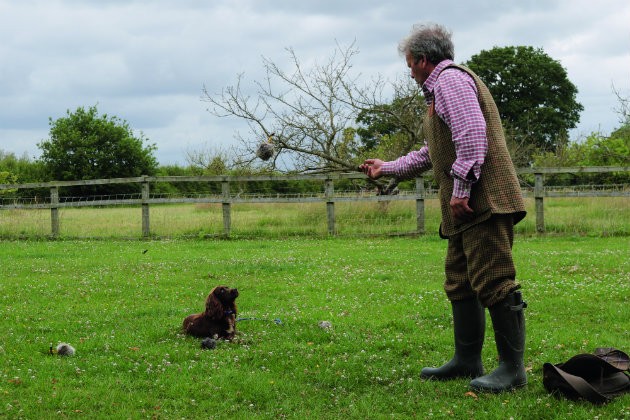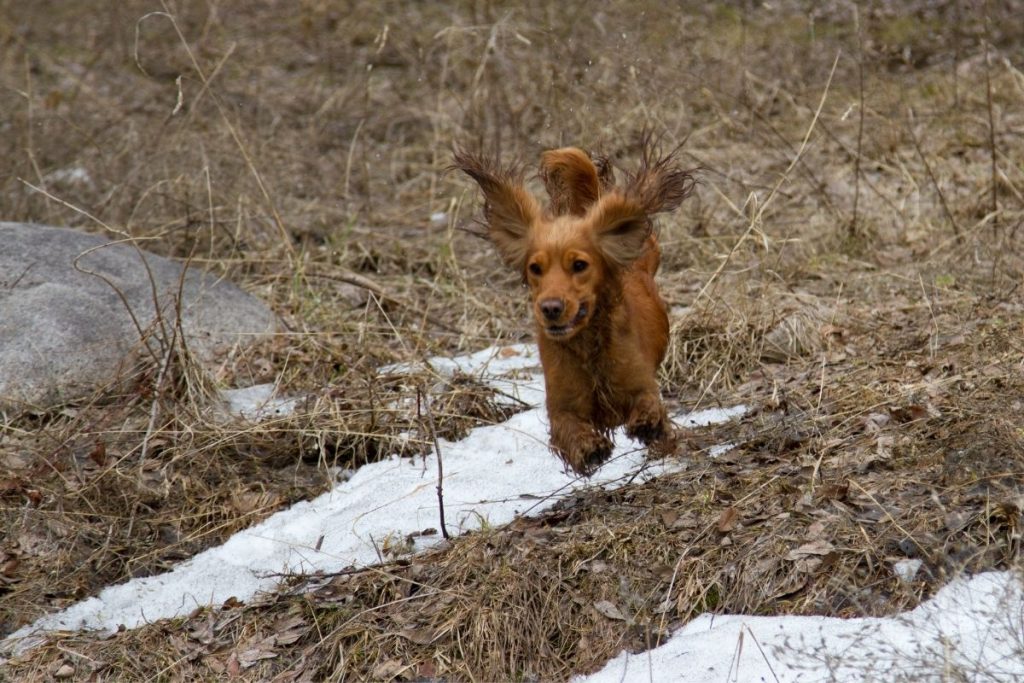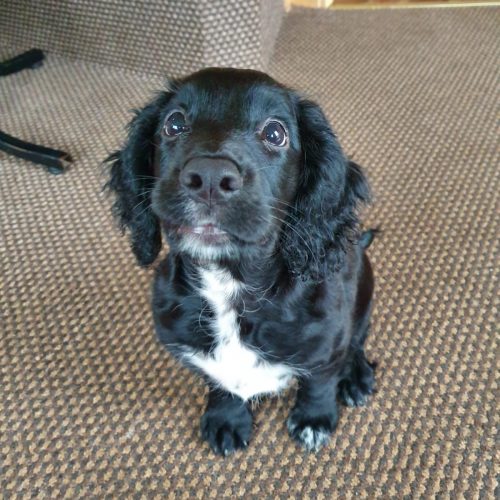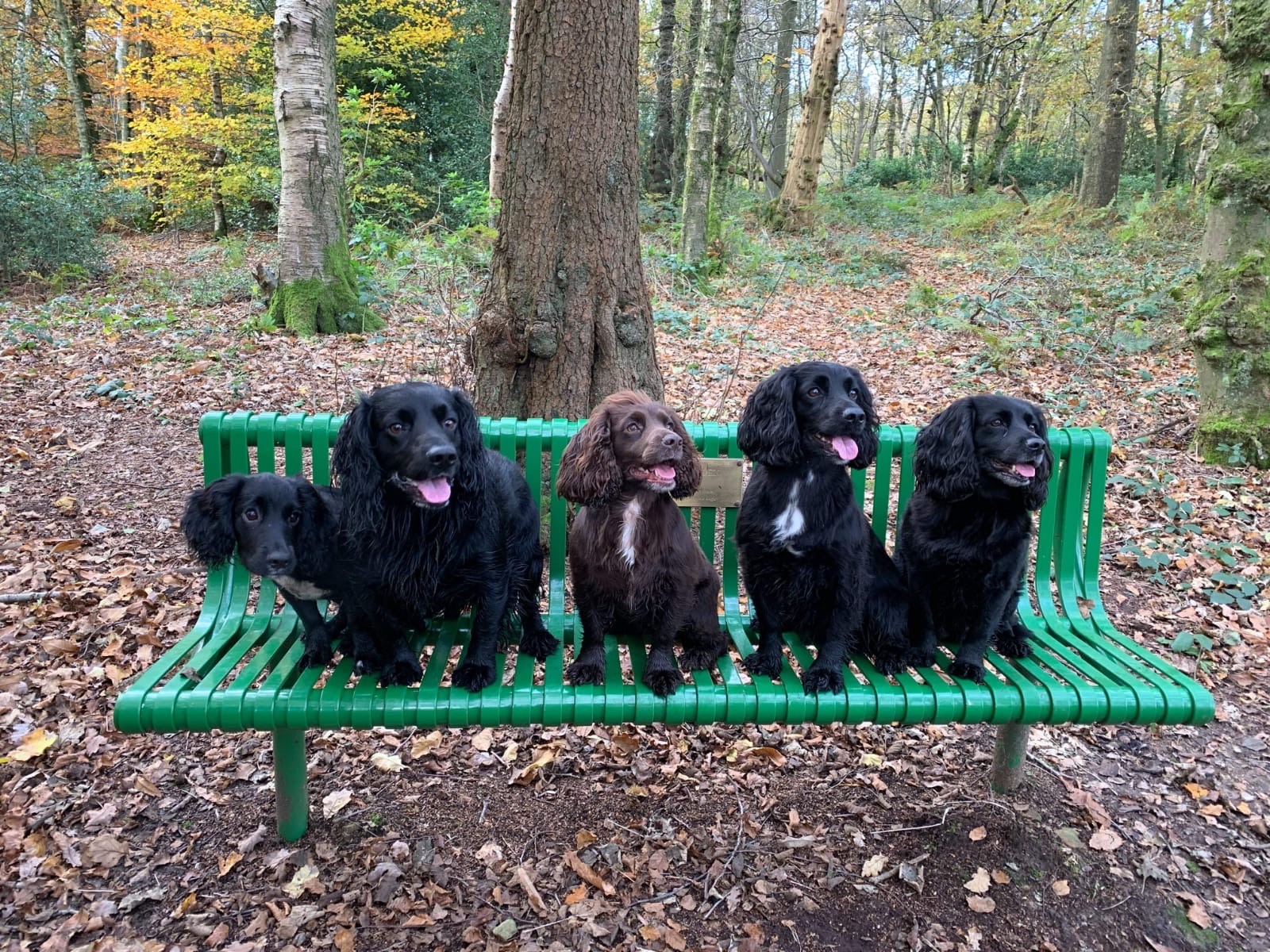When we are training spaniels there are a number of commands that we will need to introduce the dog to and that he will need to know during his time as a working gundog or pet.
Modern spaniels are sensitive, biddable dogs that, if bred from working stock, almost train themselves, and as such there should be few problems that will be experienced when training your spaniel.
It really doesn’t matter if your dog will be working or will be a pet, the commands used for a working spaniel will be good for a pet to understand and be familar with as regardless of actions, we all want our dogs to be well behaved, pleasant companions, that we can take out without having to worry about how they will conduct themselves.
What to expect from our spaniel
There are a few commands that we expect any spaniel to comply with.

Sit or hup. This is a basic yet vital command that we need our dog to comply with.
By training our spaniel to sit to command we can make him wait, we know where he is and that he is resting and being patient.
The sit command is a good way for us to control and manage our dog. It is also a really easy command to get compliance with and training a spaniel to sit should present little if any problems for the spaniel owner.
Returning when is name is called and to the whistle.
Getting your dog to come back to you is another vital area of training.
If your dog is running free then often we may need him to return to us when we call him or whistle.

When you go out and about it is evident that many dog owners struggle with getting their dog to return to them.
A lot of dogs are kept on the lead and are prevented from running free because the owner is afraid that the dog will run off and not return.
With a bit of thought and if encouraged at an early age there should be no reason for your spaniel to do this and given time it is not difficult to train a spaniel to return when called or whistled.
We will expect any spaniel to be trained to sit at a distance or to stay.
We may need to leave him for a few minutes while we move away from him and we expect him to wait until we return and tell him to carry on.
This expectation in spaniel training builds from the basic sit command and, over the course of a few sessions it should be a reasonably easy exercise to train our dog in.
For basic spaniel training of any spaniel these are the most important commands.

Spaniel commands, more advanced and working dog.
If our spaniel is to be a working dog or we are looking at more advanced spaniel training then there is a host of other commands that we will look to introduce.
A working spaniel will need to progress beyond the basics of spaniel training in order to be a well behaved and competent gundog in the field.
Our spaniel commands will be:
Retrieving to command – I use the ‘fetch’ command for my spaniels and work on retrieving from the day that they come home as puppies, letting them carry items around and encouraging them to bring them to me.
Small steps that lead into training when older. Most spaniels are natural retrievers but problems can present themselves if they are allowed to free hunt too much.
Dropping to the whistle/shot/flush. These commands all build on the basic sit command and sitting at a distance.
Part of the spaniel’s training will introduce him to these more advanced commands as he gets older. Read about training a spaniel to be steady to shot here.
Taking directions. Every gundog needs to be able to be handled.
This is true particularly when retrieving when the handler may need to stop the dog on the whistle and direct the dog with his arm towards the retrieve.
We should be able to handle our spaniel to help him when he is retrieving.
Hunting. Spaniels are natural hunters and game finders.
However, as working dogs we will need to train them to work to a pattern, making sure that they use the wind effectively to cover all of the ground around us within the shooting distance of a shotgun.
This is typically 25 to 35 yards and we do not want our spaniel to venture further than this unless he is on a retrieve.
When spaniel training for hunting we’ll introduce our dog to different types of cover, different wind patterns, from the wind blowing towards us to the wind coming from behind and to either side.
A good spaniel will be able to handle all manner of cover types and will be able to work with every type of wind and weather condition.
Training a spaniel to hunt is great fun both for the handler and his dog.
Steadiness to game – One important aspect of spaniel training is that of steadiness to game.
Our spaniel should never chase anything that he finds and should drop or stand still on finding game.
A dog that chases is out of control and potentially poses a risk to himself. So we will train our spaniel to be steady.
Water work. Most working spaniels love water and if we are careful as to how we introduce our dog to water then really there should be little if any difficulties here.
We’ll cover water work in our training section but the basics are that we only introduce the puppy to water on warm days, when he needs to cool off.
Why make it difficult when we can make it easy?
Spaniel training is not difficult
There are lots of myths around the training of spaniels and many people think that it is too difficult for them or that you need to have some sort of special powers to be able to train a working spaniel.
That’s a load of rubbish.
Yes. training a spaniel can, at times, have its challenges and sometimes you may feel as though you are going backwards instead of making progress, but, isn’t this true of lots of things?
With the right advice and information, enthusiasm and a willingness to have a go, the training of a spaniel to a good standard is well within the ability of the average man and woman.
With time, effort and consistency, you can train your Cocker, Springer, Clumber etc spaniels to levels that far exceed the average dog and you will have a pleasant, well behaved companion, whether working, pet or both, that you can be proud of.
[amazon bestseller=”spaniel training” items=”3″ template=”table”]
Final Words
I’ve covered the basic commands that you and your spaniel will need to become familiar with during the course of your training journey.
With time, consistency and practice there is absolutely no reason why you cannot achieve a decent level of success developing these commands with your dog.
Remember to take your time, progress slowly, always end a training session on a positive note and, if things aren’t going well, then take a break for a few days.





